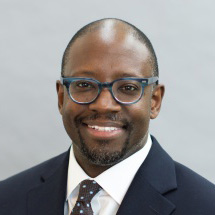 This summer I made a visit to Colonial Williamsburg in Virginia, and on a tour of churches, I heard a fascinating explanation of how society functioned when the church was the place where the poor had their material needs met, not the government. The Bruton Parish Church in Williamsburg is one example.
This summer I made a visit to Colonial Williamsburg in Virginia, and on a tour of churches, I heard a fascinating explanation of how society functioned when the church was the place where the poor had their material needs met, not the government. The Bruton Parish Church in Williamsburg is one example.
According to church records, Burton Parish formed in 1674 following the merger of several colonial parishes originating as far back as 1633. As a Church of England congregation, this Anglican parish church was the center of life and culture. For example, during the era of the American Revolution men like George Washington, Thomas Jefferson, and Patrick Henry attended the church. Not only did prominent people in politics attend the parish church, the church also served the central location for providing social services for the poor.
In 17th and 18th century Williamsburg, Virginia helping the poor was assumed, as a social norm, to be the responsibility of the church, not the state. In the Bruton Parish, the vestrymen, in addition to managing the affairs of he parish, were responsible for all poverty related social services. In the Anglican church, the vestry was established as a committee elected in local congregations to work with the wardens of the church to meet various needs. During the colonial era, if a person did not have adequate housing, adequate food or clothing, if women were widowed and children were orphaned, and so on, it was simply an assumption that the church would meet the needs of those on the margins locally and personally.
In the early 1990s, Marvin Olasky challenged Americans to re-think the role of the church and faith-based organizations in meeting the needs of the poor by reminding us that before FDR’s “Great Society” programs, “Human needs were answered by other human beings, not by bureaucracies, and the response to those needs was not compartmentalized,” writes Olasky. These “human beings” from the colonial period, through the end to 19th-century, were primarily operating directly out of the church or out of a faith-based organizations. The first orphanages, hospitals, food pantries, and so on, in America were all faith-based organizations. They were all derived from the models like the ones lived out in Colonial Williamsburg.
While America is not likely going back to an era where the church was the center of local communities (which is also not the goal given the fact that such a structure brought other negative externalities as well) Americans in the 21st-century should consider the differences between people receiving help solely on the basis of their material and psychological needs versus people receiving on the basis that they are persons with minds, bodies, and souls. Humans persons are created to live a certain way in order to be truly free and properly human. When the church was the center, spiritual and material needs were addressed with concurrently. Government social services can only help people on the basis of them existing in an anti-supernatural, non-spiritual world and absent of souls.

